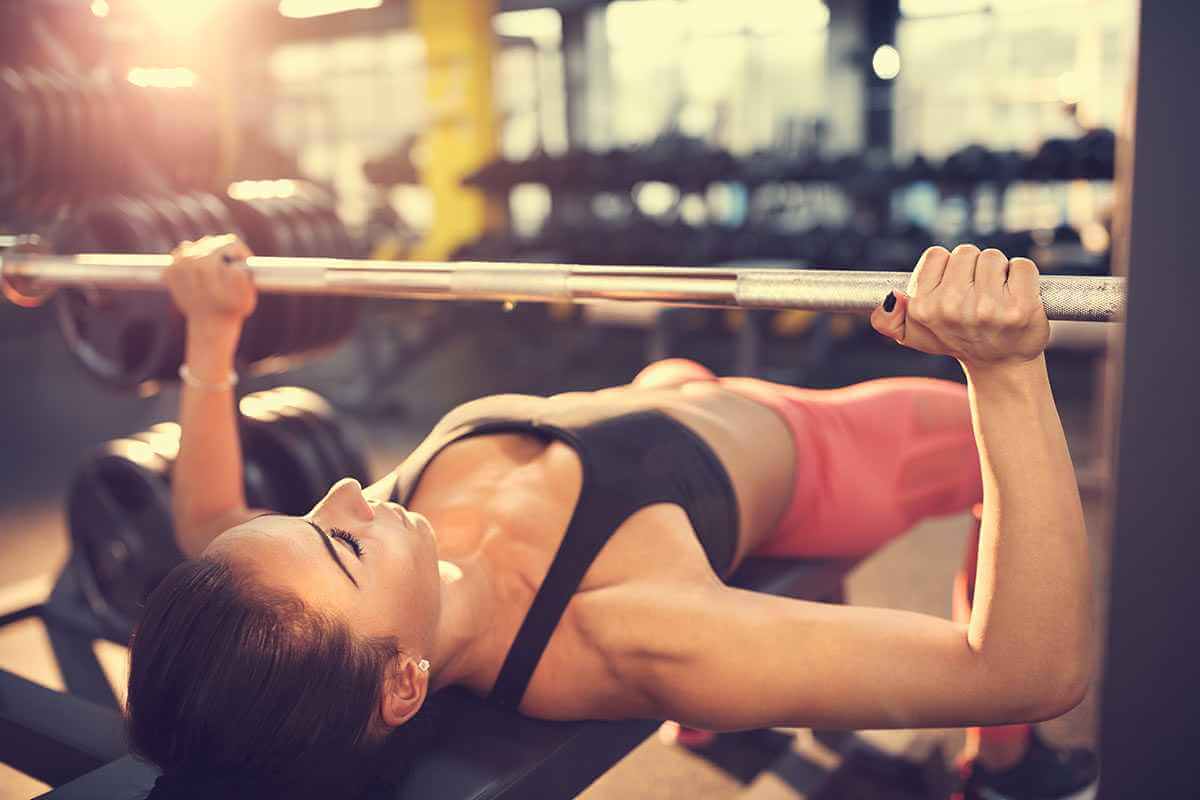
A strong chest isn’t just for professional bodybuilders. Your pectoral muscles are an integral part of your anatomy and keeping them strong will have a positive effect on your everyday life as well as your performance in the gym.
Before you start training though, you should have a good understanding of the anatomy of your pectorals and know what pectoral exercises you should do to build a strong chest.
The importance of pectoral strength
Your pectoral muscles are one of the largest muscle groups in your upper body. They pull on the humerus (upper arm bone), allowing you to make vertical, horizontal, and rotational movements with your arms. You use these muscles all day, every day, so it’s important to keep them strong.
If you have strong pectoral muscles, you can perform a variety of tasks using your upper body, including:
- Lifting heavier weights and training harder during exercise
- Moving heavy objects around the house
- Getting up off the floor
- Throwing and swinging equipment for sport
- Arm-wrestling
- Lifting a small child into your arms
- Washing the dishes or your hair.
Having strong pectorals can also improve your posture
Good posture is necessary in helping you function optimally in everyday life and getting your form right while exercising. What’s more, a strong chest helps to strengthen your back muscles, and together they keep you upright and ensure good posture.
If you’re a guy, strong pecs will give you the courage to stand tall and show off your sculpted muscles. And if you’re a gal, strong pecs add height to your chest wall, lifting your breasts. This’ll make your breasts firmer and perkier, so you’ll no longer slouch from droopy breasts.
Exercises such as push-ups and bench presses can help you strengthen your pectoral muscles if you do so on a regular basis. Pectoral exercises also improve the strength of your shoulders and arms. And if you can lift heavier weights or do more push-ups, you’ll burn more calories. Don’t forget to stretch your pectoral muscles to avoid injury and pain.
Remember, strong chest muscles mean a strong body. Since the pectorals control your arms, you’ll need them to be strong if you want to be able to use your arms and the rest of your body to perform everyday tasks.
The anatomy of pectoral muscles
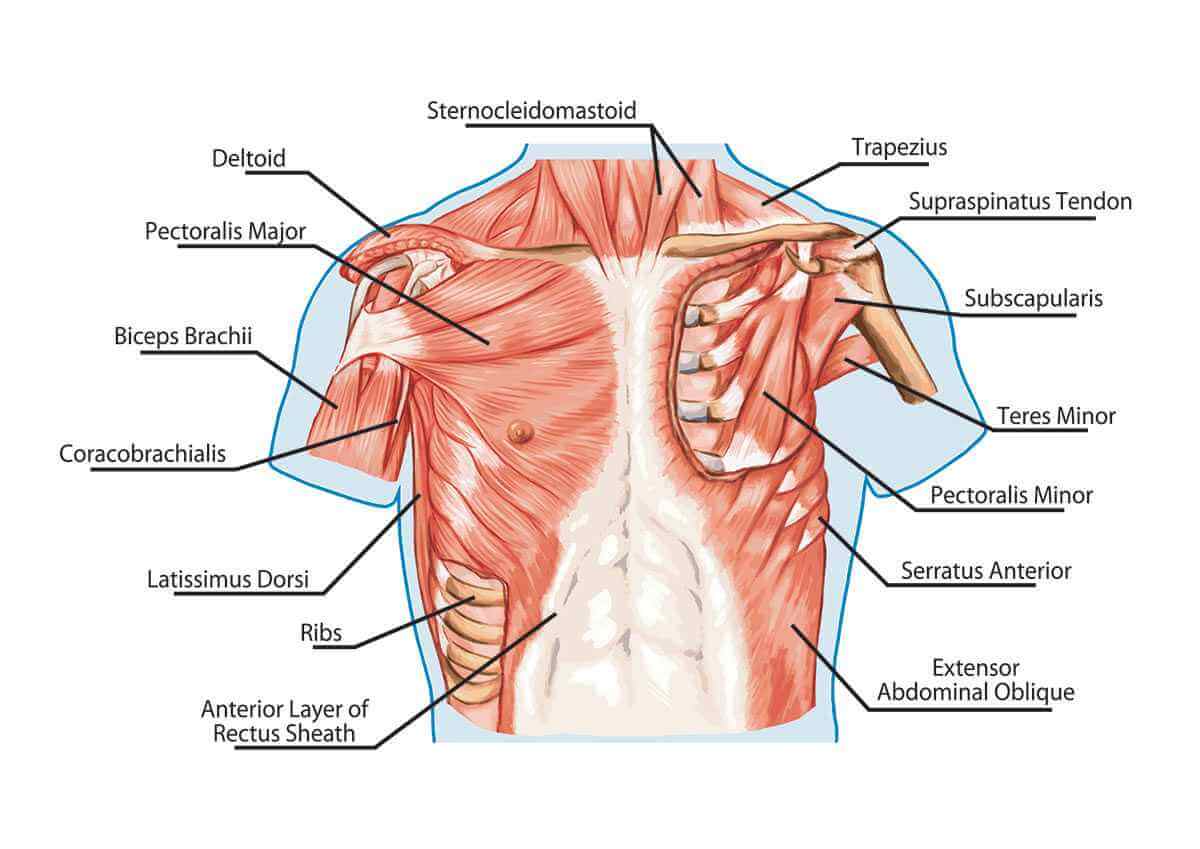
You’ll find the pectoral region on the anterior chest wall. It consists of four ‘pushing muscles’ that exert a force on your upper limbs (shoulders, arms, and hands).
- Pectoralis major
The pectoralis major is large and fan-shaped. It’s also the most substantial and superficial muscle. It’s comprised of a clavicular head and a sternal head. They originate from the clavicle and sternum and insert into the upper part of your humerus.The pectoralis major helps bend your shoulder joints and move your arms toward and across your chest.
- Pectoralis minor
The pectoralis minor is thin, triangular-shaped, and lies beneath the pectoralis major. It originates from the third to fifth ribs and inserts into your scapula’s (shoulder blade) coracoid process.The main function of the pectoralis minor is pulling your shoulders forward and down.
- Serratus anterior
The serratus anterior is situated more laterally in the chest wall and has several strips originating from the sides of ribs 1 to 8. These strips attach to the costal (rib facing) surface of your scapula’s medial border.The serratus anterior can rotate your scapula, allowing you to lift your arms over 90 degrees. It can also hold the scapula against your ribcage.
- Subclavius
The subclavius is a small muscle found beneath your clavicle, running horizontally. It originates from the junction of the first rib and its costal cartilage and inserts into the middle third of your clavicle’s inferior surface.The main function of the subclavius is anchoring and depressing your clavicle. It also minorly protects the underlying neurovascular structures in the event of clavicular fracture or other trauma.
4 Pectoral exercises to try today
Here are some exercises you can do to improve the strength of your upper pecs and lower pecs.
1. Decline push-up for upper pecs
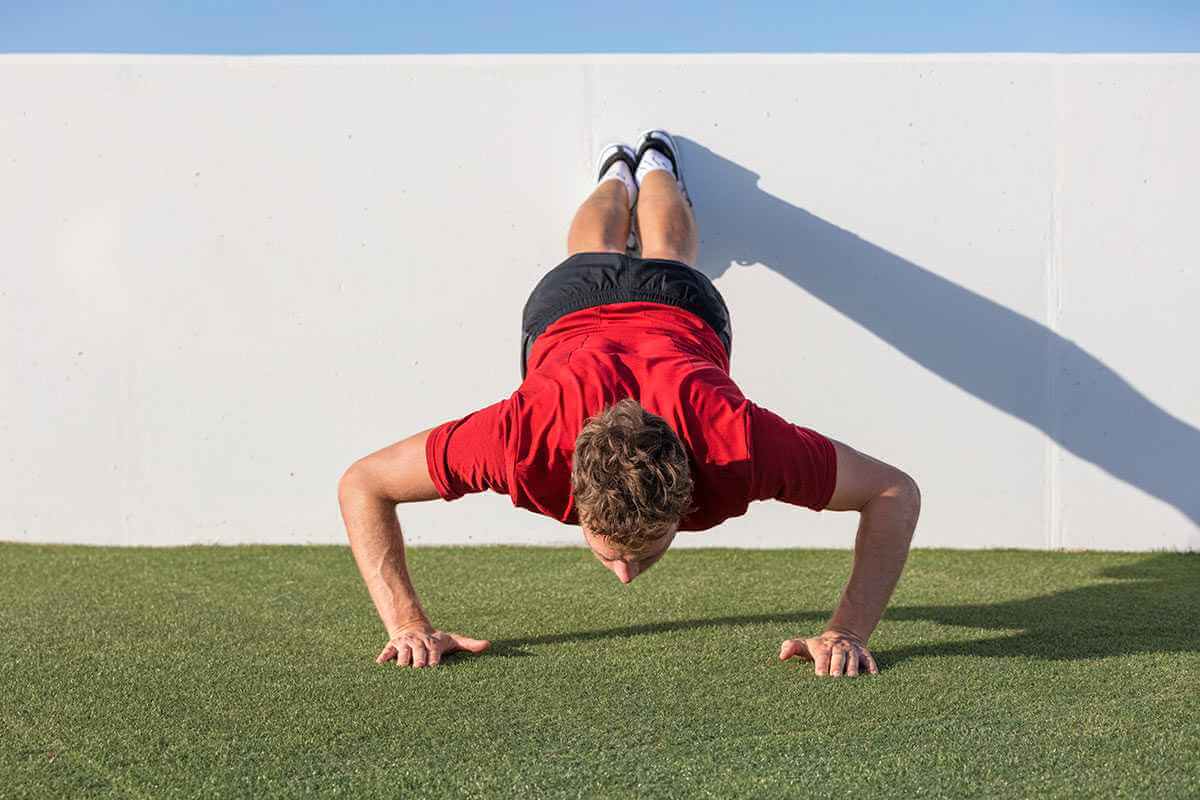
Place your hands on the floor and rest your feet on a chair or bench at a low angle. Push yourself up from the floor, keeping your body straight and parallel to the floor, and back down again without letting your body touch the floor.
2. Incline barbell bench press for upper pecs
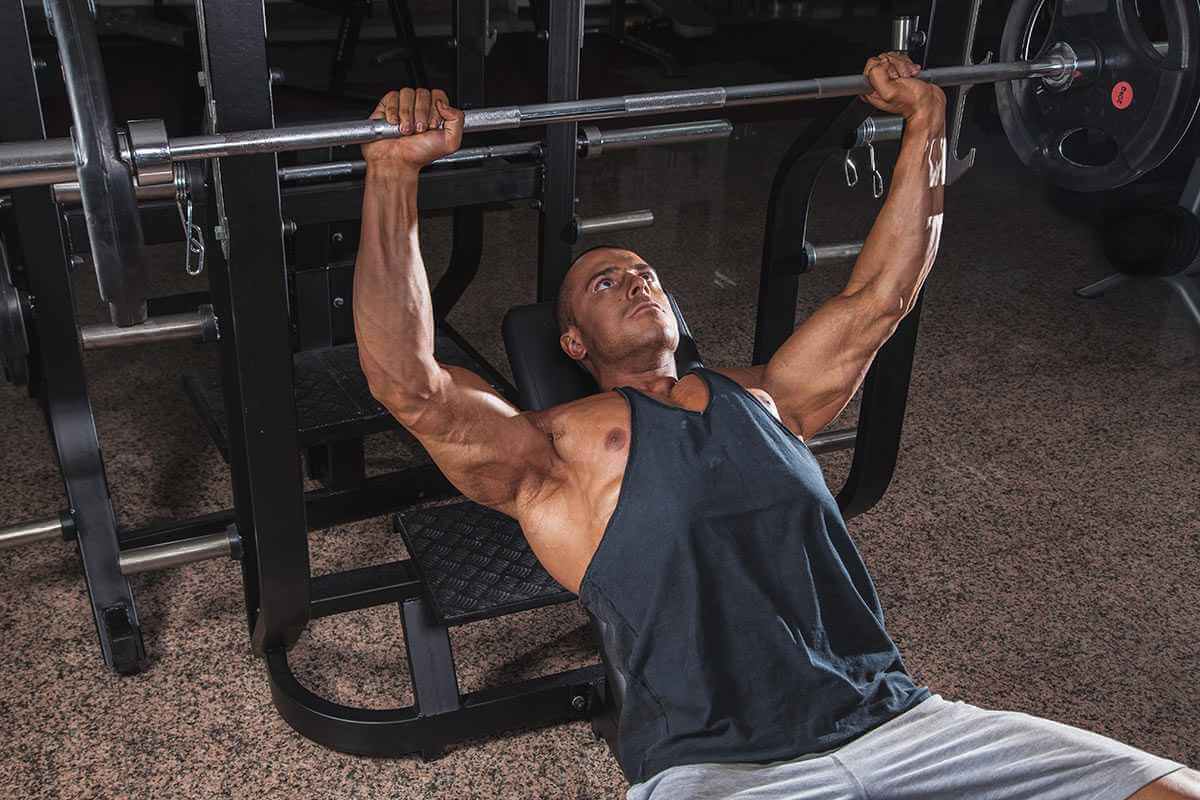
Set the bench between 30 and 45 degrees, then lie down on it with your eyes under the bar. Lift your chest, tuck your shoulder blades down, then squeeze them together. Grab the bar with your hands a little wider than shoulder-width, your wrists straight and your forearms as vertical as possible.
Arch your lower back a bit and place your feet on the floor, under your knees, shoulder-width apart. Straighten your arms to take the barbell off the rack and move it horizontally until it’s over your shoulders. Then lower it to the middle of your chest and press it back up.
3. Cable crossover for lower pecs
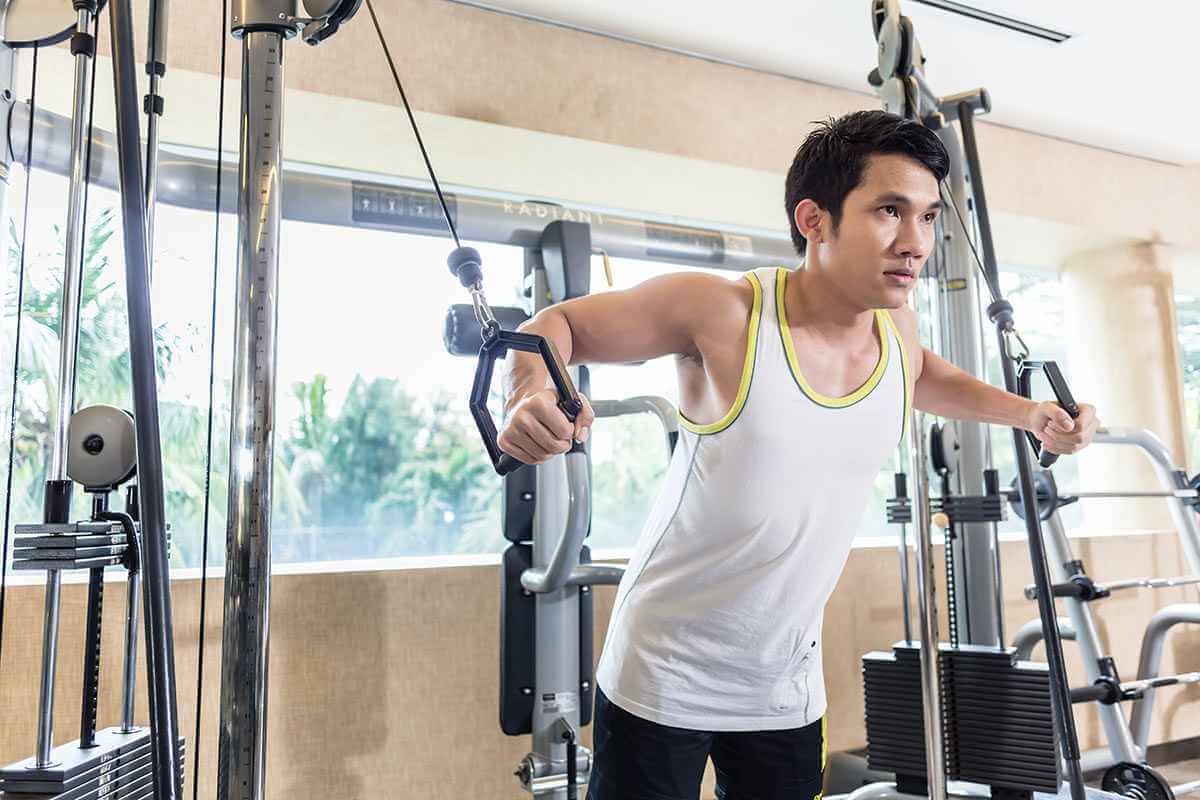
Place the pulleys on a high place over your head, choose the resistance you want to use, then hold the pulleys in each hand. Stand between the pulleys and step forward while pulling your arms together in front of you. Bend your torso forward a little from the waist.
Then slightly bend your elbows and extend your arms to the side in a wide arc until you feel your chest muscles stretch. Move your arms back to the starting position using the same arc of motion you used to lower the pulleys.
4. Decline dumbbell flyes for lower pecs
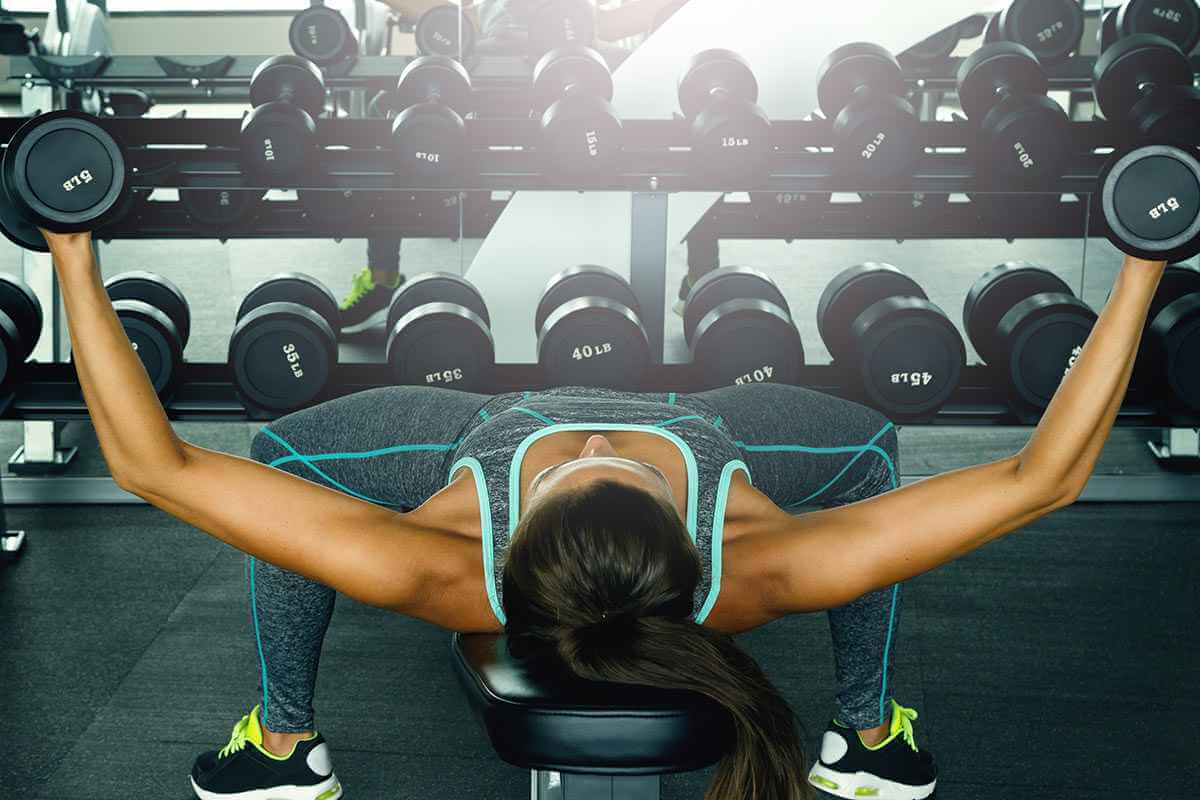
Secure your legs and feet at the end of the bench and lie down while holding a dumbbell in each hand above your thighs. Raise the dumbbells in front of you at shoulder-width, with your palms facing each other and your arms fully extended and perpendicular to the ground.
Then slightly bend your elbows and lower your arms out at both sides in a wide arc until you feel your chest muscles stretch. Move your arms back to the starting position while squeezing your pecs and using the same arc of motion you used to lower the dumbbells. Repeat for the recommended reps.
Ready to build up those pecs?
Come and join us at Bailey Fitness! We offer brand new, state-of-the-art equipment and spacious cardio and free weight zones. Our friendly personal trainers will guide you along the way as you strengthen your pecs. Drop by one of our gyms, and we’ll get you started on your fitness journey.

